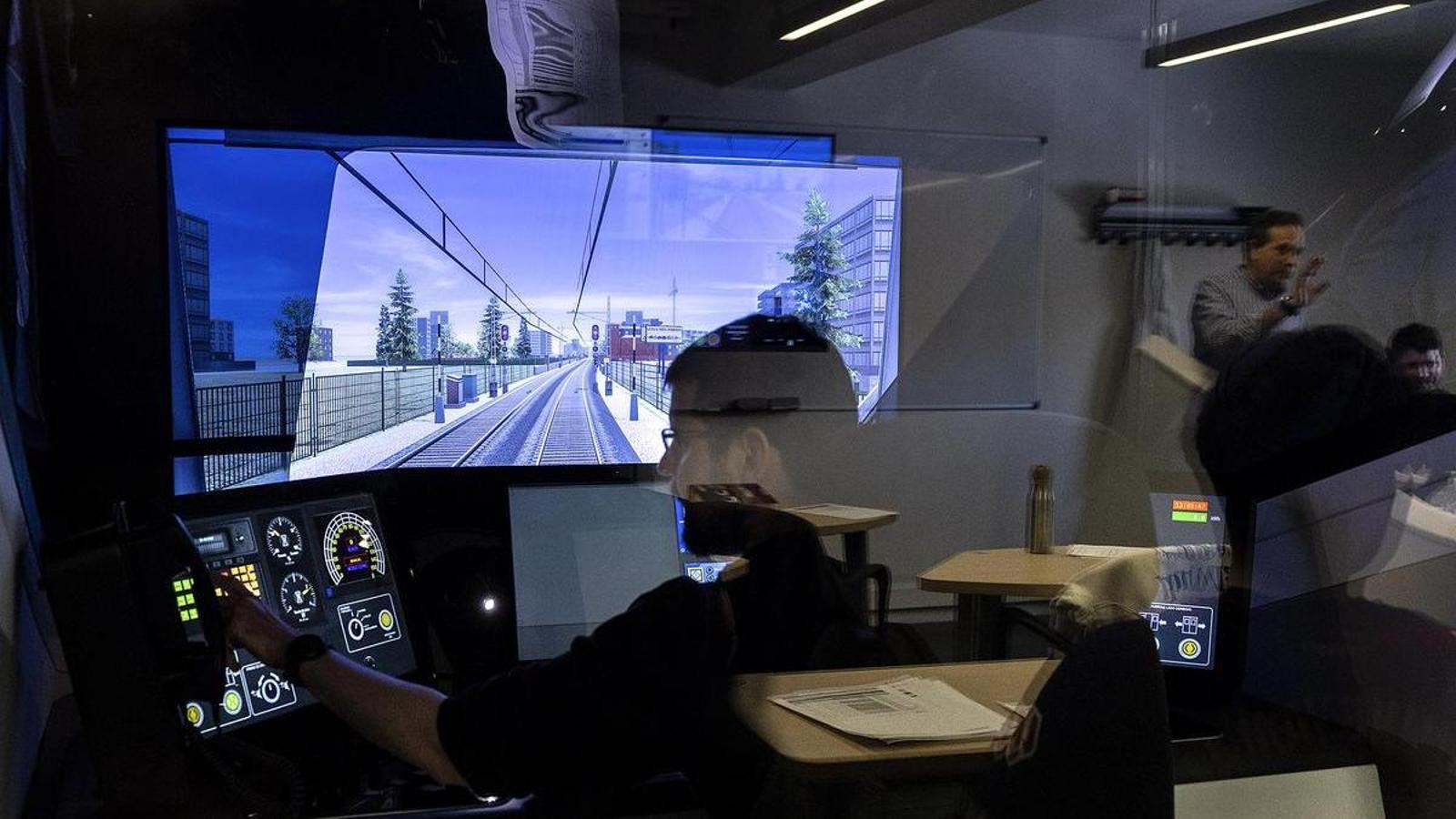More Catalans want to be Renfe drivers: this is the talent pool in L'Hospitalet.
For the first time, all the train driver candidates at the Renfe school are from Catalonia.


BarcelonaThe transfer of the Cercanías (Commuter Trains) system to the Generalitat (Catalan regional government) has sparked a great deal of strife in recent weeks. And not just political ones. One of the groups that has openly expressed its opposition has been Renfe's train drivers. They fear that the change of ownership will affect their working conditions and have tried (and succeeded) to force changes in the structure of the new joint venture. The lack of Catalan train drivers (currently 80% are from outside the country), the turnover, and the constant mobility of these workers have further strained the operation of an already delicate system. But the situation could change.
For the first time, the 28 train driver positions at Renfe's Training Center in Hospitalet are filled by Catalan students. From Cunit, Torredembarra, Puigcerdá, Montgat, Viladecans... "Demand has increased here; we see that the trend is changing," admits with a smile veteran train driver Xavier Ruiz Cantí, coordinator of the studies and trainer of this new batch. There are even Catalan applicants who have been left without a place here and have gone outside of Catalonia (to one of the other twelve centers that Renfe has in Spain) to train. Until last year, it was the other way around: most students were from outside and only landed in our house to train and begin their trade; later they moved closer to their families. The efforts to promote this trade—including with a stand at the Feria de la Enseñanza (Teachers' Fair)—have borne fruit.
The new quarry Catalan is entering the workforce at a turbulent time, with users more angry than ever. Furthermore, obtaining the qualification won't be quick: more than two years of training, internships, and multiple exams are required to obtain the European license. "You have to be very clear that you want to do the training, because it's not cheap," says Roger Sala, one of the 33-year-old students. The cost of the course, €21,200, is also a barrier to entry. "I didn't ask my parents for the money; it took me until I was 33 to get it," explains the applicant. The course isn't easy either. It's more of an obstacle course that begins with an entrance exam. "You need a minimum of a high school diploma or intermediate level vocational training, and you must pass a test that includes a section on general culture, a section on mathematics and physics, and also on language, literature, and history," explains Ruiz Cantí. "You also have to pass a psychometric test," he adds. The highest-scoring students receive one of the 300 places available annually throughout Spain, 28 of which are in Catalonia.
Last Thursday, seven of these students were practicing using the simulator. Two were at the controls of the device, which mimics the conditions of a train cabin. From his desk, the instructor gave them tests. "Driver, I've received a notification," the instructor said. "Now the student must interpret the problem they're facing and activate the corresponding protocols. It's a delicate moment," explains Ruiz Cantí. The rest of the students watched attentively from a monitor as their classmates did their work. "It's not easy; there are a lot of specific rules and procedures to know. You have to know all the signals, tracks, routes, and how to respond correctly to any change or problem," explains Patricia D'Aprile, one of the few female students.
Family tradition, a passion for trains or driving, and the search for good working conditions are the reasons students most often give when asked why they chose this profession. "I'm a nutritionist and I used to work in the hospitality industry, with very precarious conditions," Patricia explains. "I have two cousins who are train drivers, and they convinced me that this was a stable job, with decent wages, and that it was worth the investment." These decent wages, according to the agreement, are a salary that for a novice train driver exceeds 2,000 euros (including bonuses), and that increases over the years. Furthermore, they come with compact schedules. However, Patricia, who has taken out two loans to pay for the course, is aware that when she finishes, she'll still have to pass an exam if she wants to join Renfe. "I'd like to stay in Catalonia," she says. "Me too, I'd like to drive a commuter train and be close to home," Roger agrees.
They admit that the Catalan network, however, has challenges. "It's complicated," they say. "The most difficult area is the metropolitan area; there are many tunnels and many forks within it," explains Ruiz Cantí, who has driven for many years in Catalonia and was one of the first Renfe drivers to bring high-speed trains to Spain. "There's also more vandalism, more incidents, and less investment," Roger points out.
Dealing with angry users
"Sometimes, as a driver, you find yourself having to stop the train, and you don't know what's happening. You just have to stop," explains Roger. "It's difficult being the person transporting a thousand people and not being able to explain why you stopped; information is necessary to manage emotions," explains Ruiz Cantí, who has been in this situation several times.
"Now that I see it from the inside, and I see how difficult it is to resolve an incident, I think I wish everyone knew this. Nothing is as simple as it may seem from the outside. The system is very complex," reflects Patricia. "It's very easy to ask for more trains to be run, but for safety reasons, they can't run more," she continues. "What's clear is that everything that's happening on the commuter rail network isn't good for anyone. Users are the first to suffer, but so are we," admits Roger. "We can't ask for more patience, honestly. I think mobilizing, like the drivers have done, works," he concludes.
